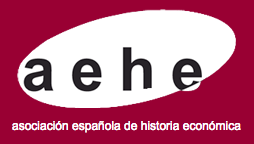The plague in Spain in the middle of the 17th century (1647-1654). Prophylatic measures and commercial repercussions
DOI:
https://doi.org/10.33231/j.ihe.2020.10.006Keywords:
plague, prophylaxis, commerce, crisis, Mediterranean, F18, H50, I10, N33Abstract
In the middle years of the 17th century, coinciding with a generalized crisis, an important epidemic of bubonic plague broke out in the Mediterranean coast of the Iberian Peninsula. This study analyzes its extension, chronology and most especially the measures taken by the local agents and by the State for its contention and subsequent eradication, as well as the temporary paralysis that this episode implied for the commercial activity
in some places. Special attention is paid to the mobility control systems –for both people and goods–, that during these acute episodes, temporally implemented the measures taken by the regional powers and the Forales («autonomous») territories customs. As a result, a dynamic evolution is observed in which intermingle economic, political-administrative, and assistance factors that, despite its limitations, favoured the plague contention in the Mediterranean arch preventing, to a large extent, its spread to the interior of the Peninsula.
Downloads
Downloads
Published
How to Cite
Issue
Section
License
Copyright (c) 2020 Francisco José Alfaro Pérez, Francisco Javier Marichalar Vigier

This work is licensed under a Creative Commons Attribution-NonCommercial-NoDerivatives 4.0 International License.
Aquellos autores/as que tengan publicaciones con esta revista, aceptan los términos siguientes
- Los autores/as conservarán sus derechos de autor y garantizarán a la revista el derecho de primera publicación de su obra, el cuál estará simultáneamente sujeto a la Licencia de reconocimiento de Creative Commons Reconocimiento-No comercial-Sin obra derivada 4.0 Internacional que permite a terceros compartir la obra siempre que se indique su autor y su primera publicación esta revista, y no permite hacer uso comercial de la misma ni tampoco obras derivadas.
- Los autores/as podrán adoptar otros acuerdos de licencia no exclusiva de distribución de la versión de la obra publicada (p. ej.: depositarla en un archivo telemático institucional o publicarla en un volumen monográfico) siempre que se indique la publicación inicial en esta revista.
Plagio y fraude científico
La publicación de un trabajo que atente contra los derechos de propiedad intelectual será responsabilidad de los autores/as, que serán los que asuman los conflictos que pudieran tener lugar por razones de derechos de autor. Los conflictos más importantes pueden darse por la comisión de plagios y fraudes científicos.
Se entiende por plagio:
- Presentar el trabajo ajeno como propio.
- Adoptar palabras o ideas de otros autores sin el debido reconocimiento.
- No emplear las comillas u otro formato distintivo en una cita literal.
- Dar información incorrecta sobre la verdadera fuente de una cita.
- El parafraseo de una fuente sin mencionar la fuente.
- El parafraseo abusivo, incluso si se menciona la fuente.
Las prácticas constitutivas de fraude científico son las siguientes:
- Fabricación, falsificación u omisión de datos y plagio.
- Publicación duplicada.
- Conflictos de autoría.





